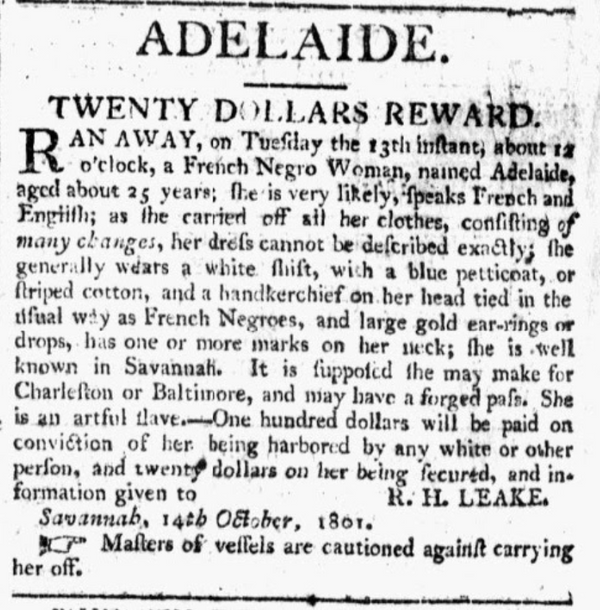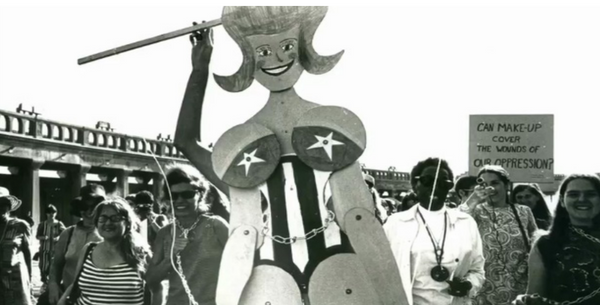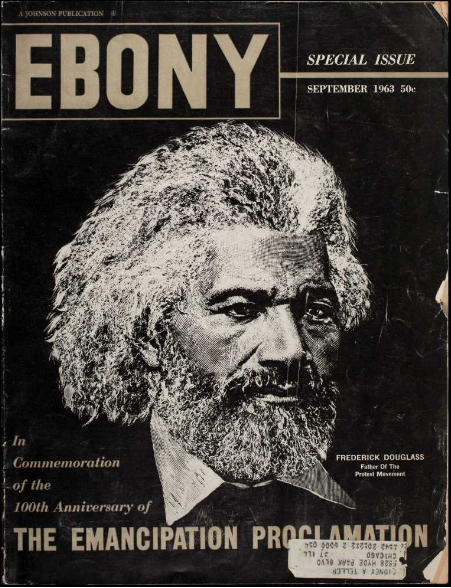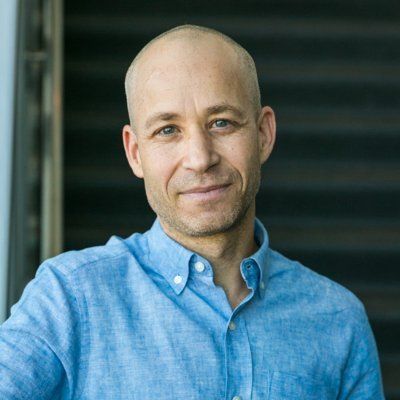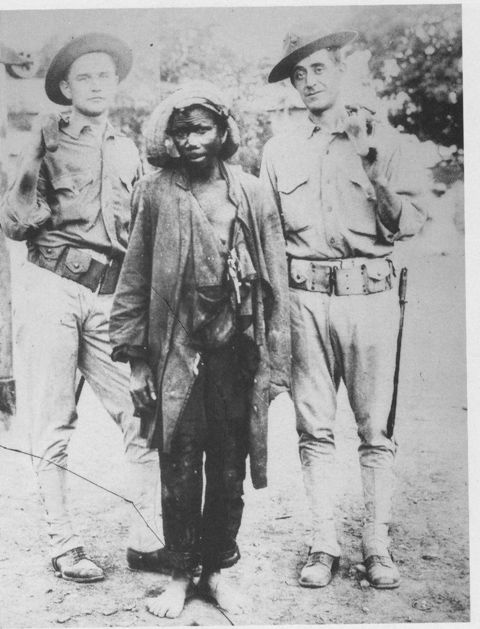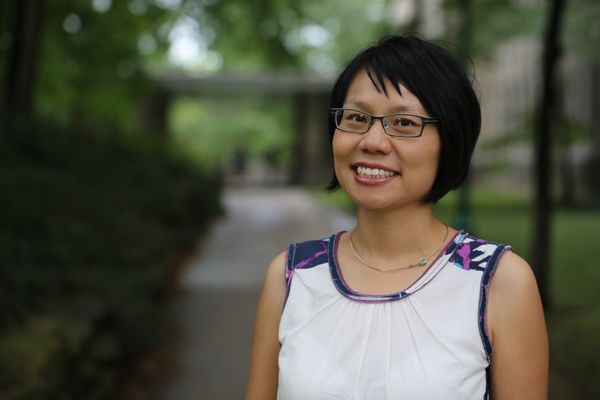By Hannah Thompson
Edited by Fiona Benson '22 and Esther Reichek '23
Introduction
In 1623, Paula de Eguiluz, a slave in the Spanish colony of Cuba, was accused of apostasy, murder, and witchcraft; in the mid-eighteenth century, the enslaved Domingos Alvares of Portuguese-occupied Brazil was judged guilty of heresy; finally, in 1821, Willem, enslaved on a plantation in British Berbice, was tried for the practice of Obeah and murder. These three instances occurred in different colonies, in different nationalities, in different centuries: what is their commonality? Despite their differing contexts, each of these cases entailed slave incrimination from healing practices drawing on African slave backgrounds. This connection to Africa calls upon creolization, defined as cultural change, as well as cultural retention, both of which each slave experienced in their own time. The study of these three narratives, with additional insight from historian Ira Berlin’s theoretical generations of slavery, yields definitive evidence about the transatlantic slave trade and the overarching method of discrimination that drove it. This evidence suggests that creolization and retention appear on a spectrum across different times and locations; it also demonstrates that Europeans associated religious blasphemy with race following the exposure to African spiritual practices.
Background of Slave Narratives
It is worth explaining in further detail each of the three slave narratives presented. In Cuba, Paula de Eguiluz often engaged in healing practices that not only healed illnesses, but also enticed men. For example, in addition to using herbs and spells to heal physical ailments, Paula practiced and taught incantations that manipulated the affections of men, whether intriguing a man for financial gain or deterring him when interest waned.[1]
After a newborn infant she attempted to heal passed away, Eguiluz was tried for apostasy, witchcraft, and murder. She later professed in her trial that she had engaged in a pact with the devil, which she was likely pressured to falsely confess, but nevertheless Eguiluz promised to repent. She later achieved manumission after serving a sentence of punishment, yet eventually returned to practicing spiritual healing; soon thereafter, Paula was tried again. She tried to conceal her practices by implementing Catholic doctrine in her trial testimonies, which was successful only for a short period of time. After nearly fifteen years of this cycle of evading authorities in her healing practices and facing governing punishment, Eguiluz was finally sentenced to death following her third trial.[2]
In the case of Domingos Alvares, enslaved in Brazil, his master allowed him to travel to conduct customary African healing exercises, with, of course, some limitations. When he continually resisted and challenged these restrictions, Alvares was accused of poisoning his master’s property. After being imprisoned and sold to a different owner, Domingos continued to practice these rituals and gained notoriety throughout the region as a reputable African healer. Alvares was eventually manumitted in 1739; unfortunately for Domingos, though, his subordination to imperial authorities was still existent. Alvares’ neighbor, a man named Barbosa, surveilled his practices and reported his activities to the Portuguese Inquisition. Alvares was then sentenced to a public lashing and four years in prison. After serving this sentence, Alvares continued to engage in these spiritual healing rituals, ending in his exile.[3]
Finally, Willem of the Dutch colony Berbice was tried after practicing a violent form of spiritual “healing” called Obeah, which led to the death of a slave named Madalon on the nearby plantation Op Hoop van Beter. Madalon’s plantation was ridden with an unidentified sickness, and Willem, as an esteemed healer, was called upon to heal the sick slaves. Several slaves who served as trial witnesses attested to the fact that Willem had successfully healed them of the sickness that plagued the plantation. The Obeah practice, specifically called the Minje Mama dance, soon turned violent with Madalon, and she was flogged to death by Willem. Willem was tried for both murder and the practice of Obeah, subsequently outlawed by the British government. After being found guilty and sentenced to death, Willem was hanged.[4]
Analysis of Creolization & Retention With Generations of Captivity
Creolization is best defined as cultural change, and posits that African culture narrowly survived the Middle Passage, if at all. This process most commonly occurred among smaller groups of slaves with diverse backgrounds.[5] Conversely, retention suggests cultural continuity for slaves in spite of the opposition they faced to their African heritage. Retention of native culture transpired in conditions wherein large groups of slaves from the same area were transported across the Atlantic.[6] Both creolization and retention appear in a variety of forms across time and space, and both are complexly present in the established narratives. All three slaves, for instance, exhibited retention in their healing practices from Africa. However, there is gradation, especially in the case of Willem. Slaves on the plantation in which Madalon resided testified in court, claiming that Willem’s practices had healed them. In spite of this, Madalon’s healing took a brutal turn, recorded when one of the slaves recalled he saw Willem “strike [Madalon] with a shovel; she fell down, and cried out, ‘You are killing me.’”[7] Madalon fought for her life in the midst of a restorative practice; normally a safe and nonviolent practice in its original context, the Obeah ritual performed by Willem was anomalous in its brutality.[8] The fact that Willem performed a severely violent variation of a typically innocuous African practice suggests the potential of creolization; in other words, the displacement of Willem and his culture in the harsh context of European colonialism changed the nature of the healing practice, rather than retaining the practice in its original and harmless form. While it is possible that Willem’s narrative is an exception, the presence of cultural change in this case is supported by the influence of the barbarous conditions of plantation life, as well as the rupture that the Middle Passage signified for slaves from their lives in Africa.
Willem’s violence is likely explained by the brutal example set by slaveowners to their respective slaves. Historian and professor Ira Berlin proposed that slaves be categorized based on their generation, which entails defining characteristics that correspond to each era; these generations provide a helpful framework to categorize slave life in a particular period, but it is also worth noting that the generations sometimes converge and blur definitive boundaries.[9] For instance, Willem, as a slave in the early nineteenth century, is technically categorized as part of the “revolutionary generation,” which was marked by ideological shifts toward liberty and revolution.[10] At the same time, the fact that Willem worked on a plantation suggests he may still be part of the “plantation generation.”[11] Nonetheless, Willem was subjected to characteristics of the plantation generation, including the “escalation in the level of violence [which] accompanied the imposition of a plantation economy.”[12] In other words, in an economic infrastructure that is primarily dependent upon slave labor, slave owners tended to be more brutish toward their slaves. Therefore, the savage treatment Willem experienced from his owners, which was characteristic of the plantation generations, likely influenced his violent variation on the traditionally benign practice of Obeah. The process of creolization in this case was accelerated, as increased violence from slaveowners contributed to a fatal variant of the African Obeah practice.
In contrast to Willem, Eguiluz and Alvares experienced creolization in other forms, as they occurred in the context of different generations of captivity. While both narratives never stated intentionally violent spiritual practices, Paula and Domingos’ healing practices display the pervasiveness of Catholicism in their assimilation to captivity, likely as a result of colonial imposition. In Eguiluz’s case, “her confessions reveal her limited knowledge of Christian doctrine; yet, they expose her devotion to the Virgin.[13] Similarly, although the extent of Eguiluz’s understanding may have been restricted, she knew enough about the Catholic Church to reformulate her confessions to coincide with Christian beliefs.[14] Eguiluz retained knowledge of African healing practices, but also underwent the process of creolization in incorporating doctrine with her spiritual methods. This level of creolization corresponds with Eguiluz’s generation of captivity, the charter generation. According to Berlin, slaves were more connected to European customs in this time, and as such, the charter generations “had connived to gain admission to Christian churches.”[15] This is in direct contrast to Willem’s generation, as the early-seventeenth century charter generations were more intimately acquainted with European culture than the slave-society makeup of the later plantation generations. Furthermore, Eguiluz was allowed to travel to visit nearby friends in Havana.[16] Her freedoms signal a degree of autonomy, one of the “touchstones of the charter generations,” which was absent in the laborer exploitation of the plantation generations.[17] Eguiluz’s identification as part of the charter generation supports the indoctrination she exhibited in her spirituality, as well as the independence she was allowed.
Similarly, the Portuguese encouraged slaveowners to enforce Catholicism, stimulating the rationale of conversion behind the slave trade. Domingos Alvares recalled his baptism with great detail, which “suggests that he did not view the ritual with cynical skepticism or indifference.”[18] Though this assimilation was imposed, Alvares seems to have received it openly. In addition, when testifying in court, Alvares repeatedly claimed that his practices were natural, as well as the fact that his healing never directly resisted Catholicism.[19] While Alvares was not a member of the charter generation, it is possible that slaves’ familiarity with European culture was retained during the shift to the plantation generation. Nevertheless, integration of European cultural doctrines embodies the creolization that slaves like Alvares and Eguiluz experienced. Furthermore, both Eguiluz and Alvares were given European names, which reflects their entanglement with European customs. These pieces of evidence regarding creolization consequently provide insight into Berlin’s eras of captivity, which, as aforementioned, tend to overlap. For Eguiluz and Alvares, in the charter and plantation generations respectively, much of their creolization process was situated in exposure to European traditions. In contrast to this, Willem, part of the plantation generation on the cusp of the revolutionary generation, experienced creolization in a way that emphasizes the violent nature of plantation life over societal norms. Therefore, this evidence illustrates the spectrum upon which creolization appears among different generations of captivity following the Middle Passage of the transatlantic slave trade.
Equation of Blasphemy and African Culture
Secondly, these slave narratives provide insight into the European connection between blasphemy and African cultural practices. As aforementioned, Paula de Eguiluz was tried three separate times, even though she incorporated Catholic doctrine into her testimony.[20] Why was Catholicism––what might have appeased Europeans––unconvincing as support of Eguiluz’s innocence? According to Sara Guengerich, “the discourses of race and ethnicity were fused with those of witchcraft and thus brought the attention of the Inquisition to accusations of witchcraft among non-European racial groups.”[21] In other words, the spiritual exercises retained from Africa were viewed as sacrilegious in the Church, and those who practiced healing, were, therefore, associated with heresy. The racial background of these healers was also associated with heretic acts against the Church: their race was associated with their healing practices. Such an association explains why, after giving Christian purposes to her healing practices, Eguiluz was forced to admit to having a pact with the Devil.[22] If the Europeans believed, essentially, that her race was inherently heretic, then their continued prosecution––even after a Catholic confession––is validated.
In a similar way, Domingos Alvares mainly engaged in herbal practices and stated throughout his case that he did not heal people through his own means but relied on established cultural practice.[23] Despite this, he was interrogated about his abandonment of Catholicism and Devil worship.[24] As with Eguiluz, Alvares’ word was not credible enough for the Europeans to establish a narrative other than that of witchcraft. This evidence suggests that the Europeans did, in fact, correlate African culture to anti-Christian practices, despite the religious beliefs of the enslaved person in question. Furthermore, as mentioned, after becoming known as a healer, Alvares was spied on by his neighbor Barbosa, who eventually reported him to the Spanish Inquisition. Barbosa traveled to “certify what Domingos did in his cures, in order to denounce him.”[25] It is unclear whether Barbosa “demonstrated a keen interest in Domingos” because he was a scandalous topic of gossip, whether Barbosa believed he would discover Domingos engaging in heresy, or if Barbosa associated Alvares’ race with blasphemous behavior.[26] One may wonder if this pre-racist ideology existed within Barbosa, and could thus explain why he so diligently sought Alvares out; however, due to insufficient evidence, this explanation remains subject to further research. Nonetheless, the fact that Alvares was, like Eguiluz, repeatedly questioned about his association with the Devil, despite disinclinations of the case, suggests a link between European understanding of race and heresy.
Finally, in the case of Willem, the fact that Madalon was killed during the practice of Obeah not-so-subtly attached African cultural healing to murder, which the British prosecutors describe as “strictly prohibited by the law of God.”[27] Because Willem’s practice of the Minje Mama dance resulted in murder, considered to be a Divinely-ordained event, the Europeans were utilizing somewhat logical differentiation in correlating spiritual African healing with witchcraft. This evidence provides the foundation for a setting in which Europeans cognitively tied blasphemous acts to an entire racial group. This link in the European unconscious can be utilized in a greater understanding of the slave trade and the manifestations of its practices against African cultural groups, especially with respect to creolization. If Europeans immediately regarded Africans as heretic, this fact explains the escalation of violent treatment from the charter generations to the plantation generations. The evidence strongly suggests that there was a conceptual bridge drawn between African practices of culture and blasphemy of the Church to Europeans and specifically European slave owners.
Conclusion
In conclusion, the narratives of Willem, Domingos Alvares, and Paula de Eguiluz yield insight into the cultural change and retention that occurred for slaves in various European colonies across the Americas in separate time periods. Ira Berlin’s theory of generations of slavery, which often operate concomitantly, provides a framework from which to view these instances of cultural change and retention. In these narratives, varying implementations of spiritual healing practices revealed that creolization and retention manifested on a spectrum, differing based on generation and circumstances. More specifically, this evidence exemplifies that some slaves of the charter generation and even the early plantation generation experienced a certain degree of creolization that reflected European societal customs more than slaves on the cusp of following generations.
Furthermore, creolization revealed itself in varying ways, including religion and alterations of African practices. Records also suggest that Europeans formed connections between the slaves’ racial background and heresy, based on the continued implementation of healing practices by slaves from Africa. Since healing practices were considered to be heretic and African slaves practiced them, a connection existed between Africans and blasphemy. This information relates broadly to the topic of the slave trade in that creolization deals with the transfer of cultures, whether it be continuous or changing; furthermore, the conceptual European link between race and blasphemy may account for the surge of the trade in the eighteenth century, in addition to other economic and political factors. Thus, in studying African cultural practices of spirituality, facets of creolization and early racist thinking are elucidated.
Endnotes
Nicole von Germeten, Cartagena’s Most Notorious Sorceress: Paula De Eguiluz, (University of New Mexico Press: Albuquerque, 2013). ↩︎
Sara Guengerich, The Witchcraft Trials of Paula De Eguiluz, a Black Woman, in Cartagena De Indias, 1620-1636, (Hackett: Indianapolis, 2009). ↩︎
James Sweet, Domingos Alvares, African Healing, and the Intellectual History of the Atlantic World, (University of North Carolina Press: Chapel Hill, 2011). ↩︎
The House of Commons, Trial of a slave in Berbice, for the Crime of Obeah and Murder, (Court of Criminal Justice of the Colony). ↩︎
Lisa Lindsay, Cultures of Slavery in the “Charter Generations”, Lecture, The University of North Carolina at Chapel Hill [UNC]. ↩︎
Ibid. ↩︎
Ibid, 25. ↩︎
Lisa Lindsay, African Life in the Diaspora, Lecture, The University of North Carolina at Chapel Hill [UNC]. ↩︎
Ira Berlin, Generations of Captivity, (Belknap Press: Cambridge, 2004). ↩︎
Ibid. ↩︎
Ibid. ↩︎
Ibid, 73. ↩︎
Guengerich, The Witchcraft Trials, 177. ↩︎
Ibid. ↩︎
Berlin, Generations, 86. ↩︎
Ibid, 175. ↩︎
Berlin, Generations, 60. ↩︎
Sweet, Domingos Alvares, 47. ↩︎
Ibid, 176. ↩︎
Guengerich, The Witchcraft Trials, 175-177. ↩︎
Ibid, 176. ↩︎
Ibid. ↩︎
Sweet, Domingos Alvares, 176. ↩︎
Ibid, 171. ↩︎
Ibid, 148. ↩︎
Ibid, 147. ↩︎
The House of Commons, Trial of a slave in Berbice, 41. ↩︎
Bibliography
Berlin, Ira. 2004. Generations of Captivity: A History of African-American Slaves. Cambridge, MA: Belknap Press. https://books.google.com/books?id=WrzmkXfcc3wC&printsec=frontcover&dq=generations+of+captivity&hl=en&sa=X&ved=0ahUKEwj3m6uhksHhAhUhTd8KHTpNCI0Q6AEIKjAA#v=onepage&q=generations%20of%20captivity&f=false
von Germeten, Nicole. 2013. "Cartagena's Most Notorious Sorceress: Paula de Eguiluz". Violent Delights, Violent Ends: Sex, Race, and Honor in Colonial Cartagena de Indias. University of New Mexico Press: Albuquerque. pp. 103–122.
Guengerich, Sara V. 2009. “The Witchcraft Trials of Paula De Eguiluz, a Black Woman, in Cartegena De Indias, 1620-1636.” Essay. In Afro-Latino Voices: Narratives from the Early Modern Ibero-Atlantic World, 1550-1812, edited by Kathryn John McKnight and Leo J Garafalo, 175–94. Indianapolis, IN: Hackett Publishing Co.
Lindsay, Lisa. 2019. African Life in the Diaspora. Lecture, HIST 278: The Trans-Atlantic Slave Trade. The University of North Carolina at Chapel Hill.
Lindsay, Lisa. 2019. Cultures of Slavery in the ‘Charter Generations’. Lecture, HIST 278: The Trans-Atlantic Slave Trade. The University of North Carolina at Chapel Hill. 11 February 2019.
Sweet, James H. 2011. Domingos Álvares, African Healing, and the Intellectual History of the Atlantic World. Chapel Hill, NC: University of North Carolina Press. The House of Commons. “Trial of a Slave in Berbice, for the Crime of Obeah and Murder.” Court of Criminal Justice of the Colony, 1823. Accessed April 6, 2019. https://sakai. unc.edu/access/content/group/b6dd4f0e-b3b6-4fed-bbf2-8708130688c1/Readings/Trial%20of%20a%20Slave%20in%20Berbice%2C%20for%20the%20Crime%20of%20 Obeah%20and%20Murder%20_1823_.pdf.


